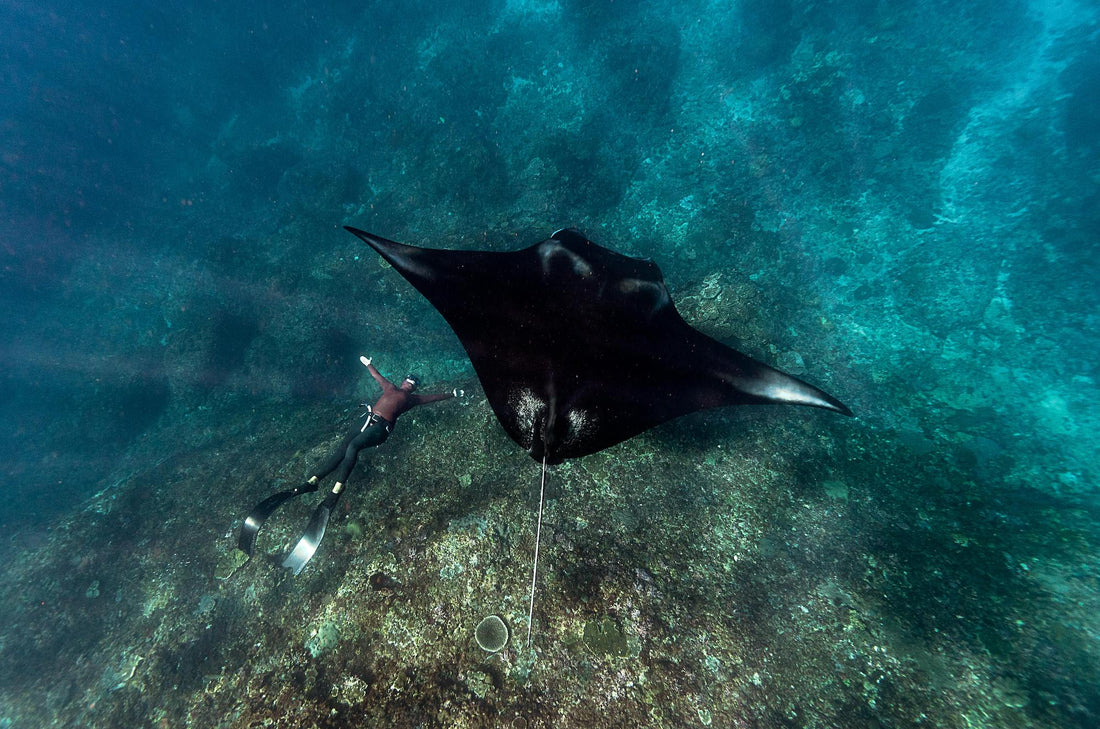For many adventurers and ocean lovers, scuba diving with the world's largest marine animals is a bucket list item. If you’re like us, you understand the thrill of swimming alongside some of the ocean's most majestic creatures, such as whales, manta rays, and sharks. Even better if it involves a wreck! So we put together a little guide for where to dive with the world’s largest aquatic animals. No matter where you are or how big or small the animals are, remember to follow safe diving practices to protect yourself, the reef, and the marine life.
Galápagos Islands, Ecuador
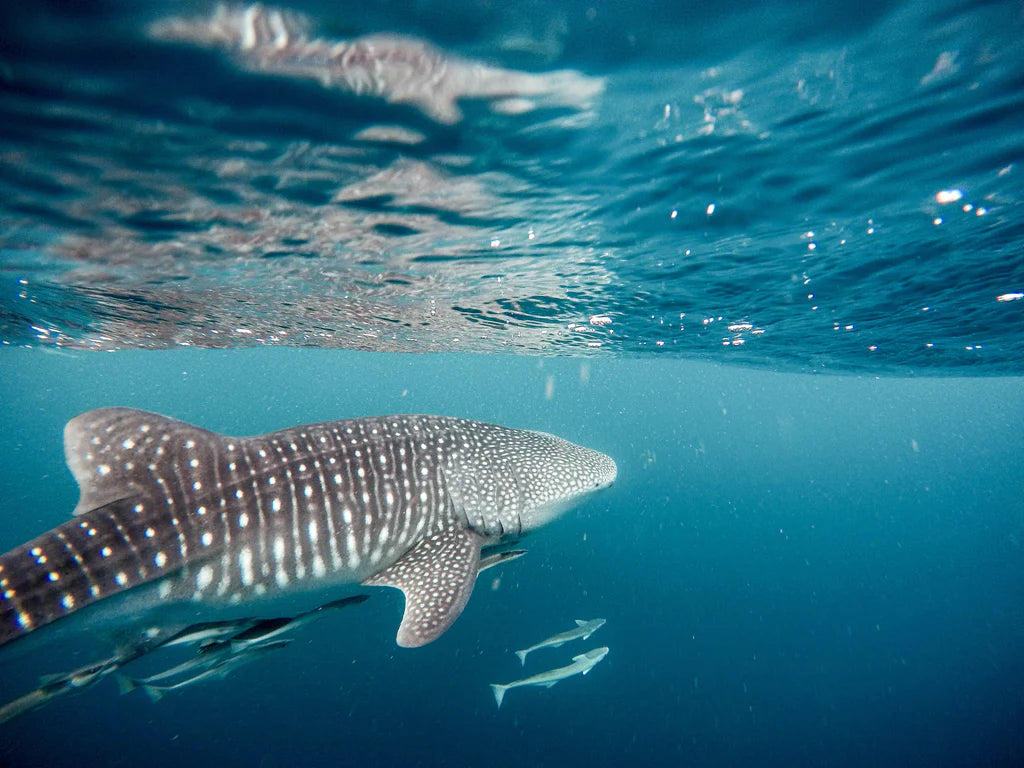
Scuba diving in the Galápagos Islands is a unique adventure due to its marine ecosystem, which is home to an impressive array of species. Here, divers may encounter hammerhead sharks, whale sharks, and sea lions. These species thrive in the Galápagos due to the nutrient-rich currents that sweep through the islands. For those looking to maximize their encounters with specific species, the best time of year to dive with whale sharks is between June and November, while hammerhead sharks are more commonly seen throughout the year, with peak sightings from December to May.
Fun fact: up to 90% of all whale shark sightings in the Galápagos are pregnant females. And because of that, it’s also the best place to dive with really big whale sharks as adult females can reach up to 40 feet in length!
Sardine Run, South Africa

The Sardine Run in South Africa is an annual marine phenomenon that draws scuba divers from around the world. From May to July, billions of sardines migrate along the Eastern Cape coast in a natural event that creates a feeding frenzy, attracting predators like dolphins, sharks, penguins, tuna, and humpback whales. The dense school of sardines moving northward offers divers a unique chance to dive with these big aquatic animals. However, due to strong currents, this experience is recommended for advanced divers.
Fun fact: you can see the sardine run from space!
Great Barrier Reef, Australia
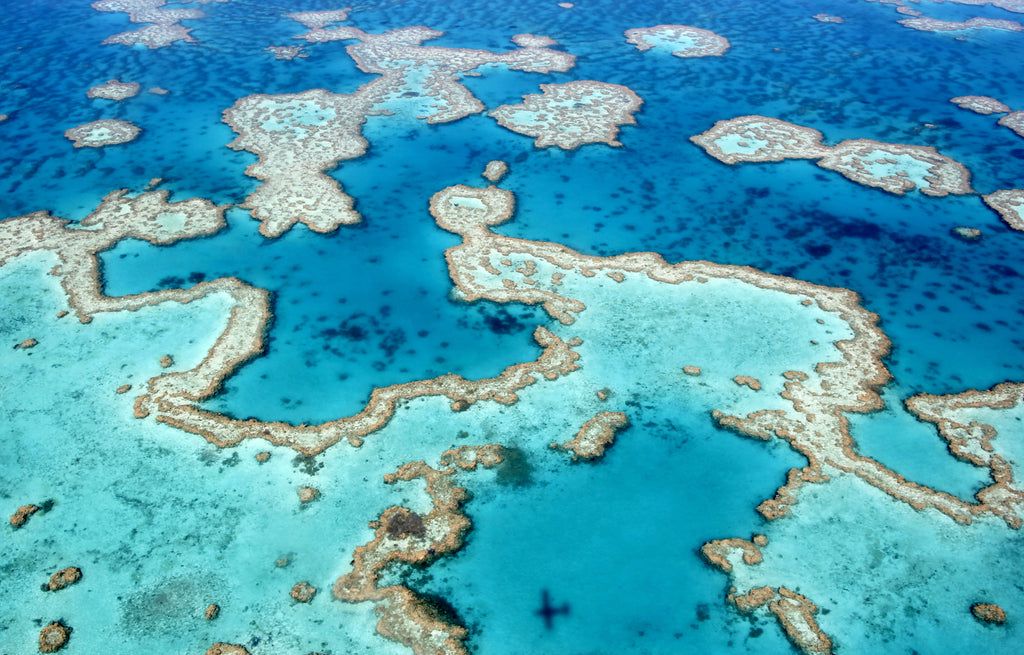
As its name implies, the Great Barrier Reef is massive, with over 2,900 individual reefs and 900 islands. Because it’s the largest reef system in the world, it attracts a diverse range of marine life including dwarf minke whales, colossal giant clams, dugongs, and various shark species. These large aquatic animals flourish in the Reef's extensive coral gardens, which provide abundant food and shelter, thanks to the warm, clear waters of this UNESCO World Heritage site. The ideal time of year to dive the Reef is from June to August, and you can hop on a boat from Caines, Port Douglas, or Airlie Beach in Queensland.
Fun fact: the Great Barrier Reef is home to 180 shark species including white tips, wobbegongs, and hammerheads!
Cocos Island, Costa Rica
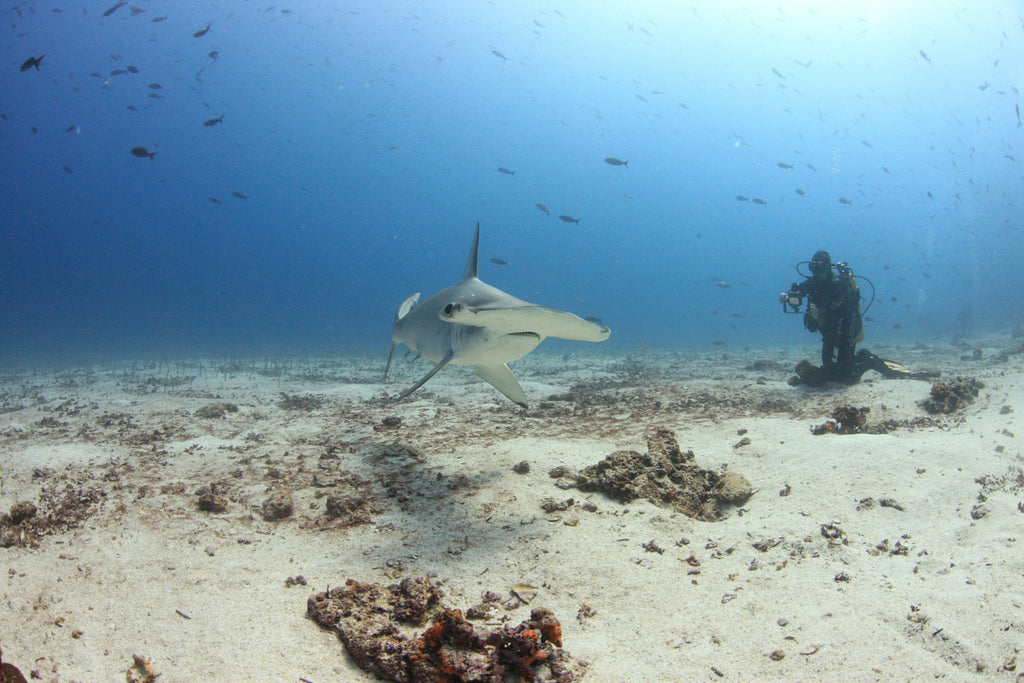
Cocos Island National Park, a remote paradise off Costa Rica's Pacific coast, is famous for its large populations of hammerhead sharks, manta rays, tuna, sea lions, and dolphins. These species are drawn to Cocos Island by the deep, nutrient-rich waters that surround the island, providing an ideal habitat for these creatures to thrive. Due to the island's secluded location, about 340 miles from the mainland, the diving experience here is typically accessed via liveaboard boats, offering divers the chance to spend more time exploring the waters. Due to its strong currents and surges, Cocos Island is recommended exclusively for advanced divers.
Fun fact: the diversity of marine life is due to the region’s climate, varied ocean currents, and the area's unique underwater features like caves, tunnels, and reefs.
Isla Mujeres, Mexico

Isla Mujeres, Mexico is one of the best places to dive with whale sharks. This destination gives scuba divers and snorkelers a unique chance to swim with these gentle giants in the Caribbean's crystal-clear waters. From May to August, whale sharks gather in large numbers to feed in the island's plankton-rich waters, making it the best time to see these magnificent creatures up close. Swimming with whale sharks in Isla Mujeres is conducted under strict guidelines to ensure the safety and well-being of the animals, highlighting the importance of responsible wildlife encounters.
Fun fact: in 2009, the area between Isla Contoy and Isla Mujeres witnessed the world's largest recorded gathering of whale sharks (up to 420 whales!).
Revillagigedo Archipelago (Socorro)

The Revillagigedo Archipelago, often referred to as "Socorro Island," is an unbeatable diving destination about 240 miles southwest of Cabo San Lucas. Here, the volcanic landscape beneath the waves is home to extraordinary marine life where you might encounter friendly giant manta rays (which are known for their curiosity toward humans). The waters are also teeming with various species of sharks (including hammerheads and silkies), dolphins, and humpback whales and whale sharks (during migration). Liveaboard diving is the only way to explore this isolated paradise, offering access to untouched dive sites and close-up experiences.
Fun fact: giant manta rays have the largest brain-to-body ratio of any cold-blooded fish, showcasing their remarkable intelligence.
Hawaii
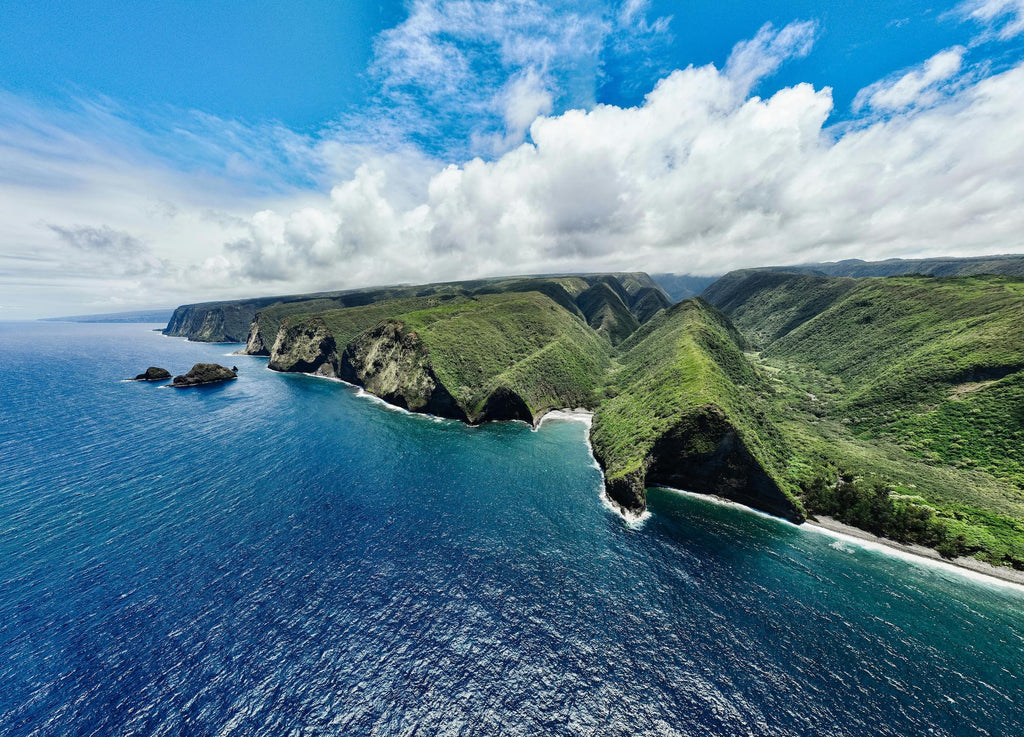
We’re probably not the first to tell you that Hawaii, and specifically Kona on the Big Island, is one of the most underrated dive destinations in the world. It’s known for manta ray night dives where you can float in the dark and watch these intelligent creatures glide around you. Manta rays are drawn to the lights that illuminate plankton (their food source), providing a unique, up-close interaction. Beyond manta rays, the clear waters of Hawaii are also home to tiger sharks, humpback whales, and dolphins.
Fun fact: our friends at Jack’s Diving Locker in Kona offer an epic manta ray night dive or snorkel tour if you’re ever in the area!

Grateful Diver supplies gear to support your biggest adventures. And you can bet that includes diving with big aquatic animals such as manta rays, sharks, and whales! A portion of every purchase goes to Reef Relief, a nonprofit organization dedicated to improving and protecting our coral reef ecosystem, which in turn will attract more beautiful creatures to the Florida Keys. Together, we can support Reef Relief in its conservation efforts and work towards maintaining healthy and sustainable habitats for marine life.

